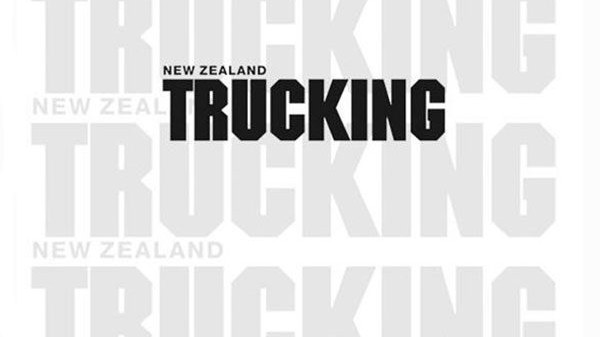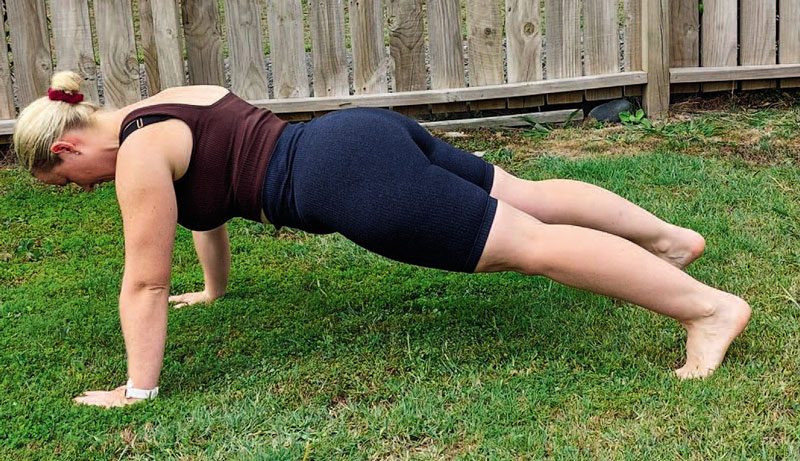
Access to a gym or sporting facility isn’t always guaranteed in these strange and ever-changing times. In fact, I am currently writing this article from isolation. I thought it would be apt to show you a full-body workout that will challenge you without the need for any equipment or fancy gadgets. You can do the exercises anywhere, anytime – all you need is a chair or step.
I will run through each movement and outline what muscles it targets, technique pointers, progressions (to make it more difficult) and regressions (more manageable) so the exercise can suit anyone of any fitness level. I have included two movements for the core, upper body and lower body, allowing proper balance and leaving no muscle groups untouched.
1. Press-ups (chest, shoulders, core)
First off is the press-up. It’s a reliable favourite that predominantly works your chest but also needs your shoulders and core to complete the movement. The press-up can be done on your knees or toes. Either way, it’s very important you keep your core tight and your back nice and flat.
Lower your chest as much as you can, aim for a 90° bend in the elbow and push yourself up, squeezing your chest as you lift. It’s essential to know what muscle you’re working on as you exercise, as it provides a mind-to-muscle connection, and you get better results from your training.
2. Tricep dips (triceps, shoulders,
core)
Most of my clients have a love/hate relationship with tricep dips (predominantly hate). Our triceps are quite a small muscle and aren’t often used as much as larger muscles like the chest and back, making tricep exercises challenging.
Set yourself up on a chair or step. Keeping your bottom and back nice and close to the chair/ step, gently lower yourself until your elbows parallel your shoulders, then push yourself back up to the starting position. It is essential you don’t go any lower than shoulder height as this can place too much strain on your shoulders. In addition, keeping your elbows pointing backwards rather than sideways is also crucial. To make the movement easier or more challenging, you can place your feet closer to your body or further away (the further away they are, the harder the movement).
3. Squats (glutes, hamstrings, quads)
The squat movement utilises many of our muscle groups, making it an important staple exercise. The golden rule of squats is to make sure that your knees never travel over your toes as you lower yourself down. If you wanted to regress this movement, you could sit down and stand up from a chair.
To begin your squat, place your feet hip-width apart. Tilt the hips back, and keep your chest up and your gaze forward as you lower down. The ideal range of motion is to get your hips parallel with your knees. As a beginner, you may find this difficult – but it is a target to aim for as you practice.
4. Lunges (quads, hamstrings, glutes, calves)
Lunges are another amazing staple movement as they get every muscle in our lower body firing throughout the movement. I find many clients tend to struggle with the lunge because there are a lot of technique cues that can be overwhelming and a lot to think about. I’ll try to keep it straightforward.
Start with your feet hip- width apart, keeping that hip- width distance as you take a large step forward. Your step should be large enough so that your knees can bend comfortably at roughly a 90° angle when you lower your back leg. Here are a few simple cues:
• Keep your back heel raised
• Keep a hip-width distance between your feet
• Keep your body upright and your chest up
• Take a nice big step forward – give your knees room to bend.
5. Plank hold (core)
The plank hold is another movement that many of my clients dread. Much of it is the mental struggle of not moving and simply holding the plank – much like a wall sit. The plank predominantly works our core, but there are a lot of other muscles at play from head to toe. It also strengthens our spine, which is hugely important.
A few key tips for performing a plank are to keep your back flat and your bottom down – you want your body straight like a plank, hence the name. Set elbows beneath your shoulders so you are not overreaching and placing undue stress on your shoulders. A plank can be performed on either your knees or toes, depending upon your core strength.
6. Leg lower (core)
A leg lower is a simple and effective way to work your lower core and hip flexors. To regress the movement, you can lower one leg at a time; lower both legs together to progress the movement.
An important factor to consider when doing a leg lower is your lower back. If your core isn’t strong enough to hold your legs closer to the ground, you may feel a tugging or discomfort in your lower back. If that is the case, you just need to raise your legs slightly higher to avoid overloading your lower back – never let your back lift off the floor either.
You could do this simple full-body workout as a circuit – for example, three 40-second rounds of each movement with a 20-second rest between each round.
Read more
Park up this summer
0 Comments6 Minutes
Put the kettle on
0 Comments5 Minutes
Workout anywhere, any time
0 Comments4 Minutes
Spring into summer
0 Comments8 Minutes













